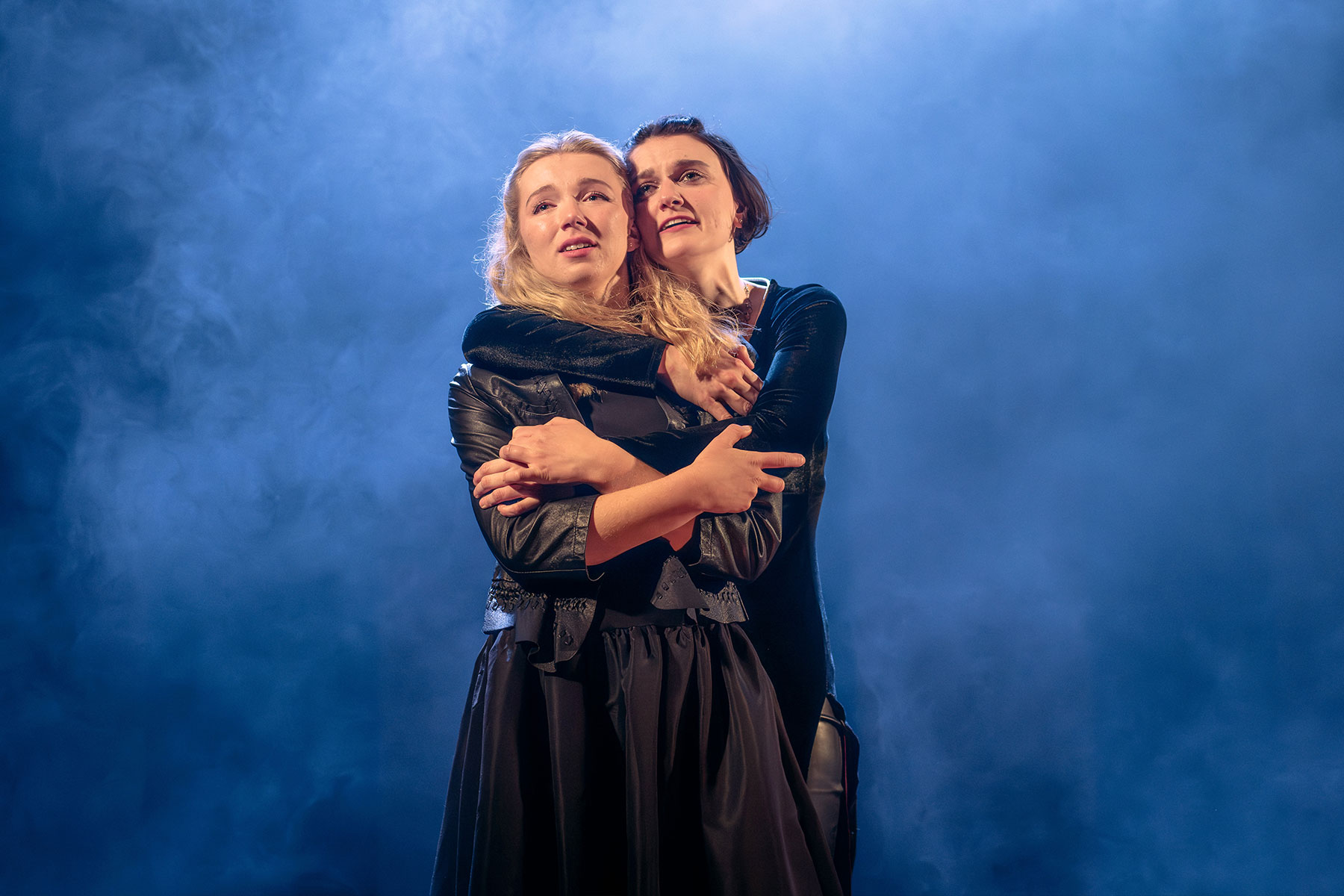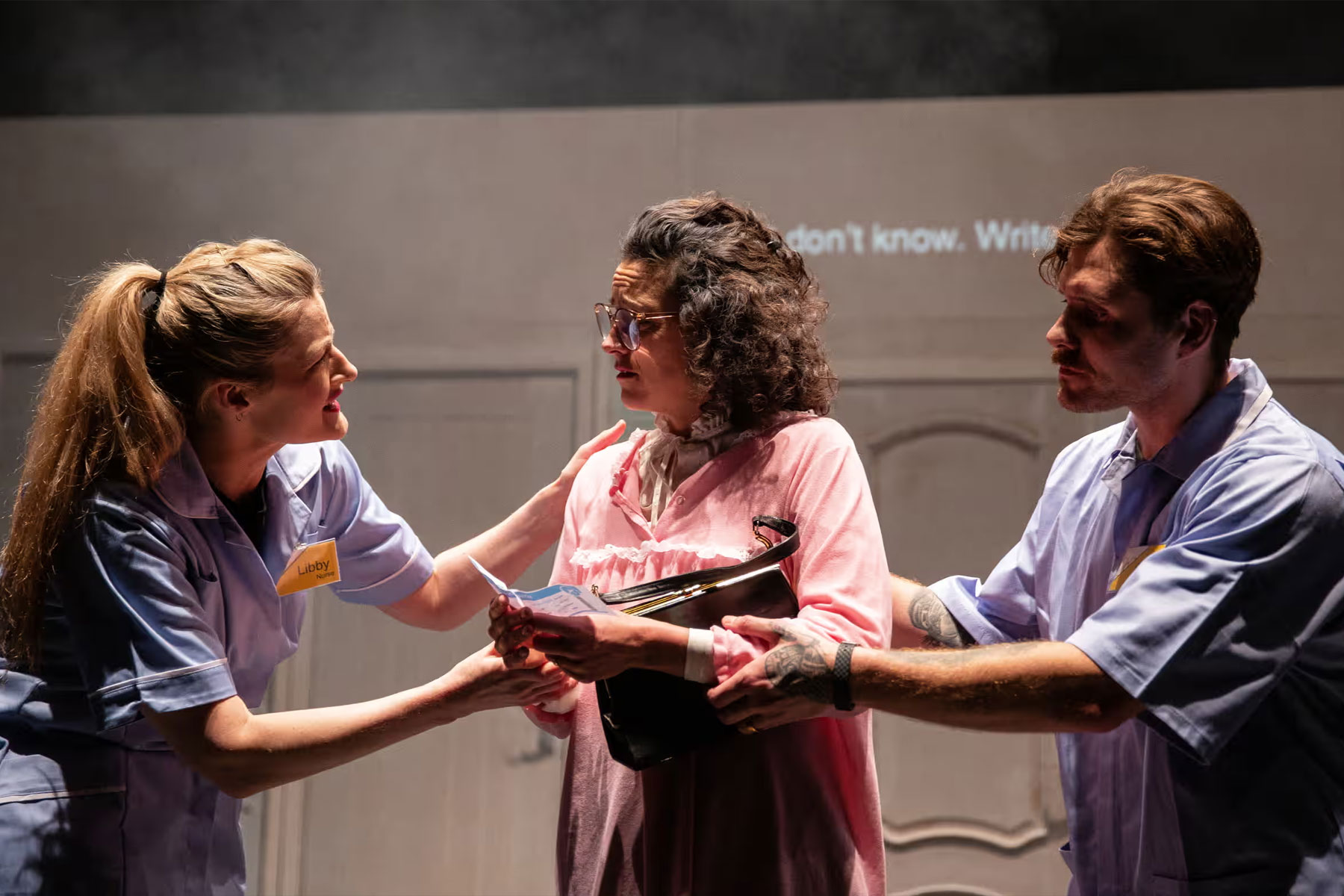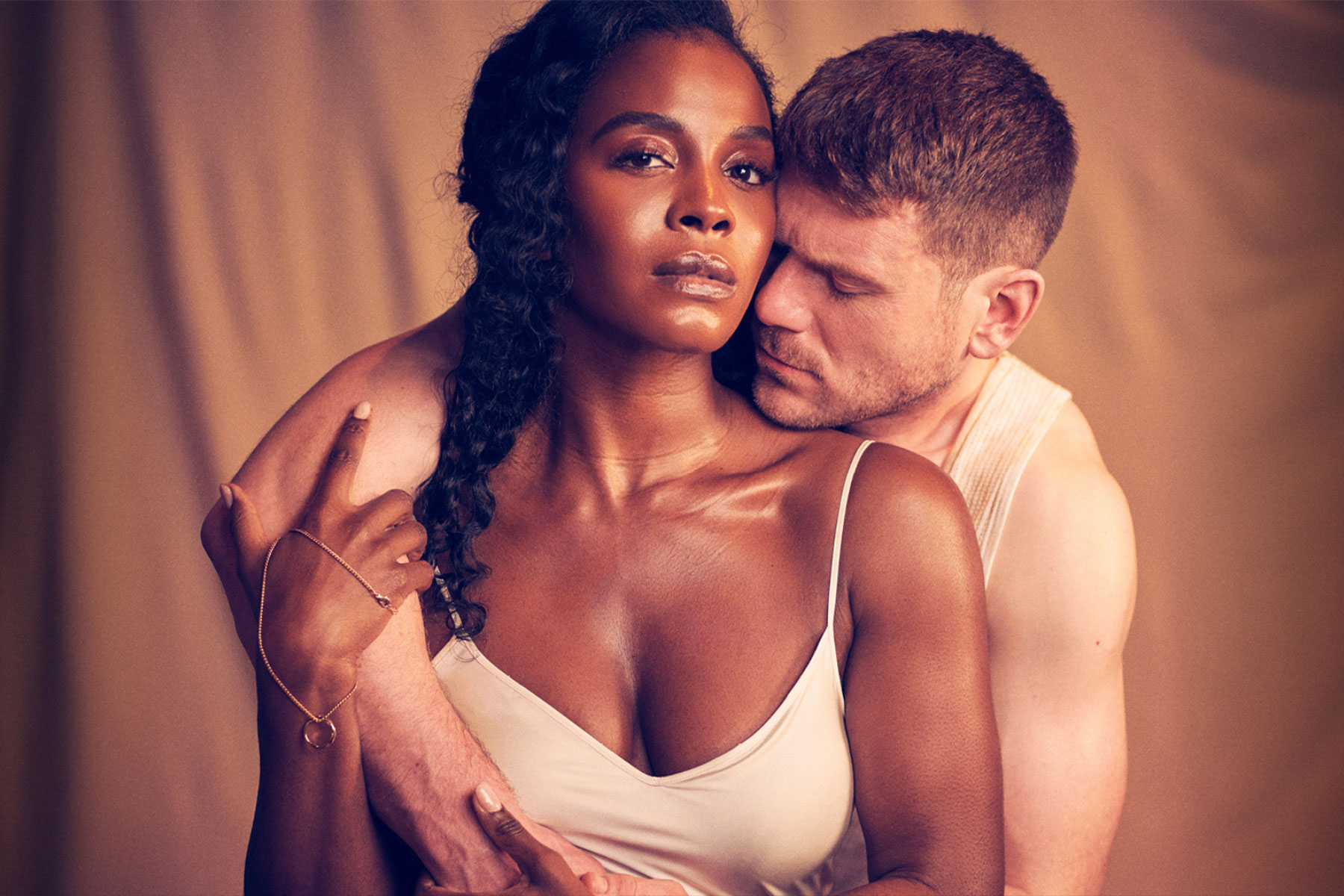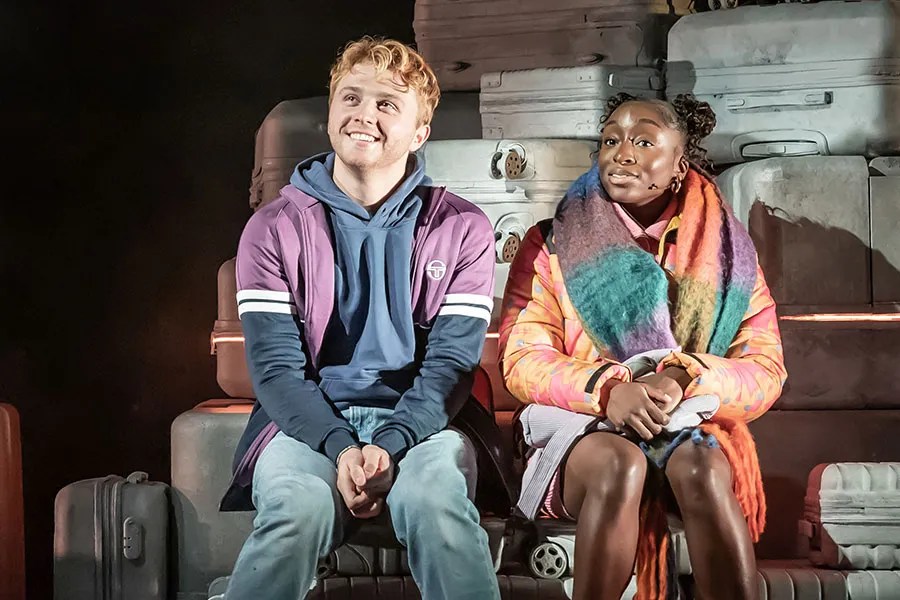Let's Talk About Sets: Lotte Collett on Jack and the Beanstalk
Hackney Empire is the perfect venue for pantomime not only because it is an old variety house; but also because it has built up an audience that are loyal and ready for their festive treat.
My approach is not to break the mould. Pantomime design is a tradition that has been tried and tested for generations. Scenes are set up behind front cloths and framed by a series of portals that mask the wings. What I bring as a designer to pantomime is a little bit of myself, my own sense of taste. Unlike many of the commercial pantomimes, which have come to rely on increasingly ornate and glittered sets, my work has a lightness of touch, I illustrate with broader brushstrokes than are commonplace. I see the cloths as a series of pages in a child's book, it is important to me that I work with scenic painters who understand my style, include the back-runs of my watercolours and the grain of paper that I work on. The show cloth is in effect the title page; a gauze, through which the children will have the opening scene revealed. The opening scene of Jack and the Beanstalk is a village, a series of three flats, of snow laden houses, the colours are sweet and pale a great foil to the bright block colours of the costumes.
Set design for pantomime is constrained by time, space and budget. With twenty-five flying pieces fighting for space, it can throw up many compromises; however the prime consideration is telling the story clearly for a young audience. For many young people this is their first introduction to theatre and it has to be magical. The traditional stories lend themselves to magic and a pantomime will always have its transformation moments. In our version of Jack and the Beanstalk there are two transformations, a snowman transforms into the Snowman character and the growing of the beanstalk. Constructed from simple materials, lycra, paper rope and plastazote with the liberal application of glitter, Jack's magic beans materialize into a nine metre long beanstalk that heads miraculously up into the flys with the principle boy climbing its full height with the assistance of a harness and wires.
Pantomime has its roots in the harlequinade and that chaos is still evident in the slapstick or slosh scenes. This year our slosh scene is based in the giant's kitchen, his bread making machine causes actors and stage to be covered in flour and cream pies, while the audience is pelted with dough balls. For the audience this appears as if it is mayhem, however it has taken considerable thought and careful choreography. Magic is the essence of panto, Jack has this in abundance, a giant and Davina the singing harp who in our version is programmed by the misguided giant to create gold from the elements in space.
Susie McKenna has given Jack and the Beanstalk a strong moral twist this year; Mother Nature is fighting for the survival of our planet. She and all the good characters enter from stage right, while the Baddies have their entrances from stage left. This is a tradition passed down from the medieval mummers where heaven was found on the right and hell on the left. For all it's traditions pantomime would be nothing without her Dame and Hackney is blessed with Clive Rowe who brings both humour and pathos while dressed in my fanciful costumes.
Jack and the Beanstalk runs at Hackney Empire until 3 January.










